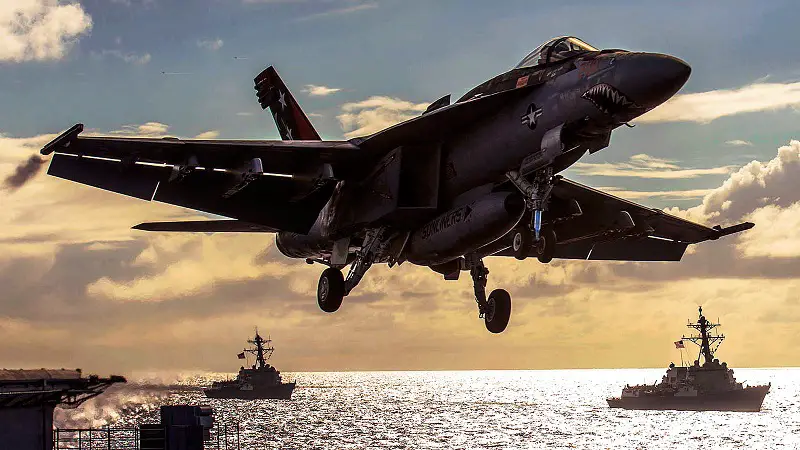Raytheon Intelligence and Space, El Segundo, California, is awarded a $372,137,000 cost-plus-fixed-fee, cost reimbursable, firm-fixed-price, indefinite-delivery/indefinite-quantity contract. This contract provides for updates, improvements, and enhancements of tactical capabilities, sensor instrumentation, and instrumentation interfaces in support of F/A-18 Super Hornet and EA-18G Growler software blocks. Work is expected to be completed in June 2028. No funds will be obligated at the time of award; funds will be obligated on individual orders as they are issued. This contract was not competitively procured pursuant to Federal Acquisition Regulation 6.302-1. The U.S. Naval Air Warfare Center Weapons Division, China Lake, California, is the contracting activity.
Few companies know the Super Hornet and the Growler as well as Raytheon Technologies, whose businesses provide it with precision weapons, radars, sensors, avionics and other systems. And the company employs many former fighter pilots who know from experience what the aircraft can do. That could include air superiority, close air support, reconnaissance, fighter escort, strike, suppressing adversary air defenses and forward air control. And it often means deploying from an aircraft carrier – something the F/A-18 was designed specifically to do. Part of the F/A-18’s power comes from its ability to use the information gathered by the radars and other sensors on board. Several of them come from Raytheon Intelligence & Space.

The Boeing F/A-18E and F/A-18F Super Hornet are twin-engine, carrier-capable, multirole fighter aircraft variants derived from the McDonnell Douglas F/A-18 Hornet series. The F/A-18E single-seat and F/A-18F tandem-seat variants are larger and more advanced versions of the F/A-18C and D Hornet. The Super Hornet has an internal 20mm M61A2 rotary cannon and can carry air-to-air missiles, air-to-surface and a variety of other weapons. Designed and initially produced by McDonnell Douglas, the Super Hornet first flew in 1995. Low-rate production began in early 1997 with full-rate production starting in September 1997, after the merger of McDonnell Douglas and Boeing the previous month.
The Boeing EA-18G Growler is an American carrier-based electronic warfare aircraft, a specialized version of the two-seat F/A-18F Super Hornet. The Growler’s flight performance is similar to that of the F/A-18E/F. This attribute enables the Growler to perform escort jamming as well as the traditional standoff jamming mission (Radar jamming and deception). The EA-18G replaced the Northrop Grumman EA-6B Prowlers in service with the United States Navy. The Growler’s electronic warfare capability is primarily provided by Northrop Grumman. The EA-18G began production in 2007 and entered operational service with the US Navy in late 2009. Australia has also purchased thirteen EA-18Gs, which entered service with the Royal Australian Air Force in 2017.
















